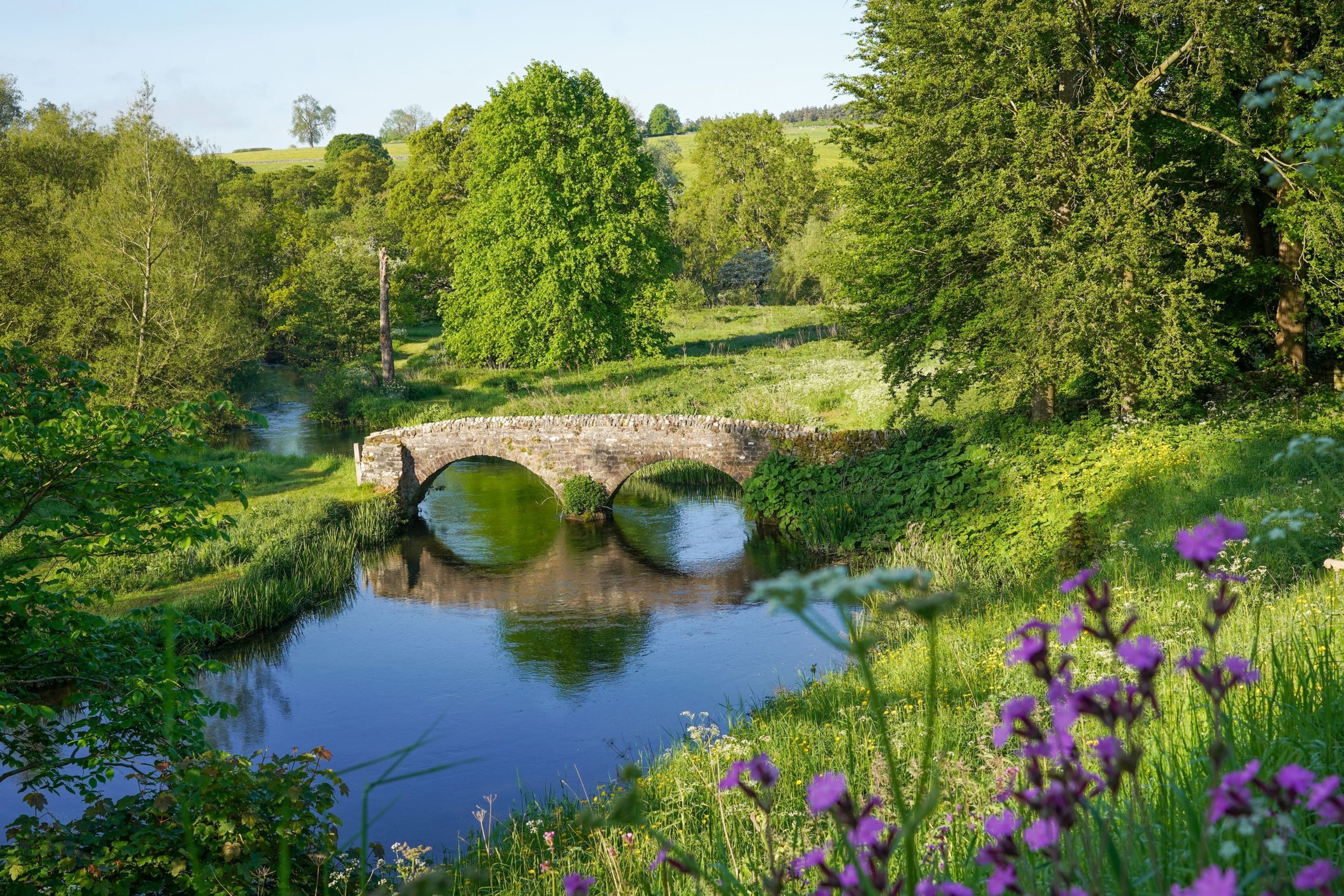
Haddon Hall, the private residence of Lord and Lady Edward Manners, is set in the scenic Peak District, alongside the River Wye. With over nine hundred years of history, it is one of England's oldest houses and has remained in the same family’s ownership for its entire existence.
What sets Haddon apart is its nearly two-hundred-year vacancy, during which time it remained largely unchanged, preserving its medieval charm while the world modernized. This unique history offers visitors a rare opportunity to step back in time, as the family resided at Belvoir Castle from the 1700s onwards.
The Hall features the Medieval Banqueting Hall, with its original dais table and a tapestry given to the family by Henry VIII. The Tudor Parlour is adorned with a stunning painted ceiling and intricate heraldic panelling, while the Medieval Chapel walls boast rare 15th-century frescoes. On the first floor, the Elizabethan Long Gallery, designed by Robert Smythson, is renowned for its beauty. The terraced Elizabethan Walled Gardens, recently redesigned by Arne Maynard, cascade down to the River Wye, offering sweeping views of the ancient parkland and the Peak District beyond. These gardens are a must-see highlight of any visit.
The House
We’re delighted to share that Haddon Hall has won the 2024 Historic Houses Sustainability Award.
The award recognises and celebrates the work done by privately and independently owned historic houses in the field of sustainability and is a benchmark for excellence and recognition of environmental best practice within the heritage sector. Lady Edward Manner said: "Sustainability and environmental best practice is at the heart of everything we do at Haddon. It has been integral to life here for nearly a thousand years, the solution to survival and endurance, and it continues to inform all our decisions to protect our landscape, biodiversity, and the wellbeing of those who live and work within our communities. "We care for the historic hall with the lightest of touches, both to respect its ancient heritage and to ensure its resilience long into the future. We have adopted the same approach in the organic management of the surrounding parkland, working hand in hand with nature to conserve its rare, diverse habitats. Haddon Medieval Park is now the area's oldest, largest rewilding project in Derbyshire, a place that provides not just a haven for wildlife but also inspiration for people. We are delighted to welcome hundreds of visitors every year to enjoy this beautiful landscape and to learn more about ecology, the environment and heritage crafts. "It is a great honour to win this award. It recognises the dedication of our family and our teams in making sustainability the keystone of our lives at Haddon, and we hope it shines a light on the work we have done and continue to do here, playing our part to contribute to a healthy future for all."
The Land
The Haddon Estate has a rich history, beginning with William Peverel, a favorite of William the Conqueror, who is recorded as the first owner of the Hall in 1086. However, after his son was involved in a plot against the crown, the estate was forfeited, and in 1170, it passed to the Vernon family.
The Vernons were influential Medieval knights and prominent figures in Tudor England, amassing great wealth and power. In the 14th century, they were among the first to receive a royal licence to enclose land for deer hunting, a prestigious pursuit reserved for the elite. The deer park, granted in 1330, was a symbol of status, providing venison, wood, and a space for livestock, all while allowing the land to be managed for both sport and economic gain.
Deer parks remained popular until after the Civil War, when many estates shifted to more profitable agricultural uses. Haddon’s Medieval Park, however, remained intact for centuries, only being altered around 1782 by the 4th and 5th Dukes of Rutland, after the estate passed to the Manners family in 1557.
Despite these changes, much of the original parkland’s features survived, enabling its restoration in the 21st century to its former productive and natural state.




